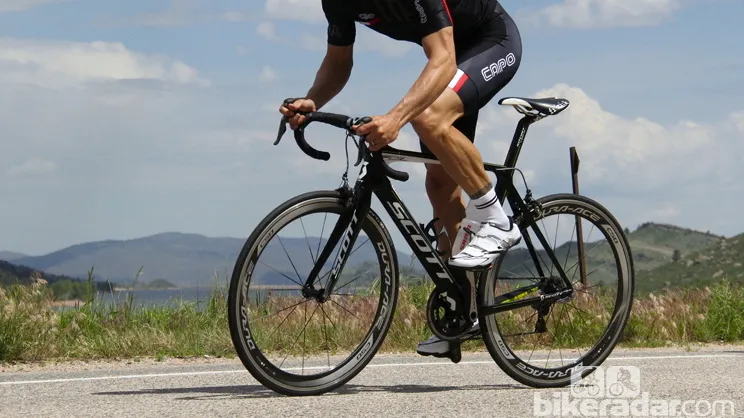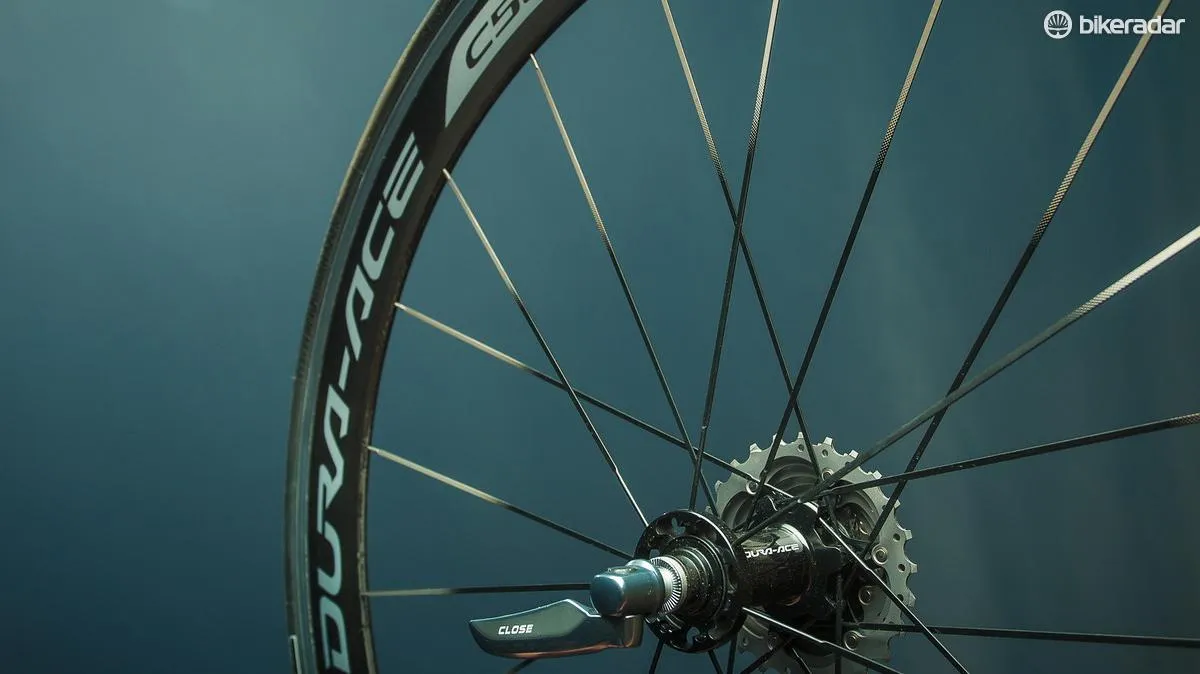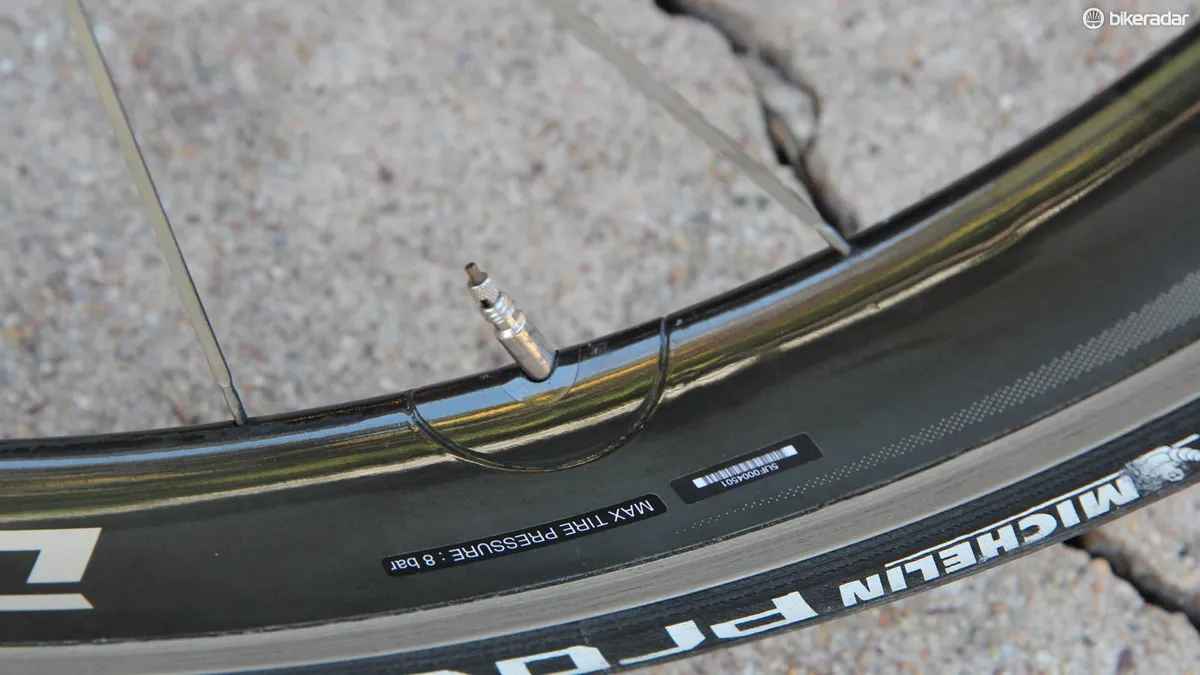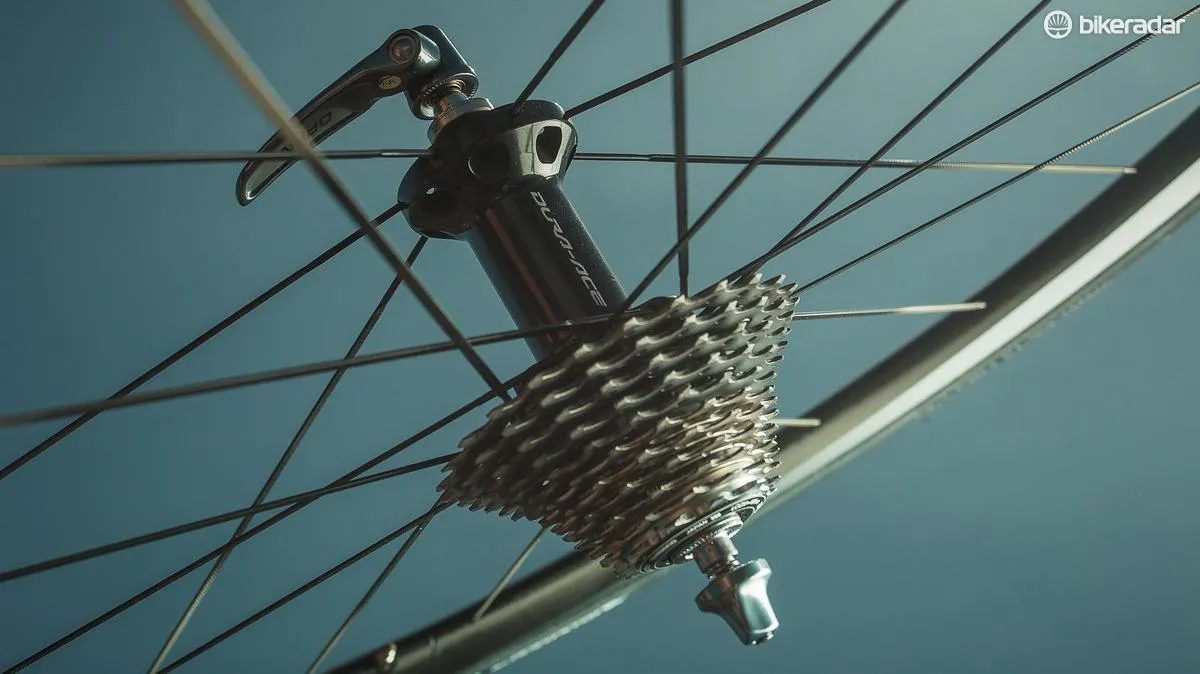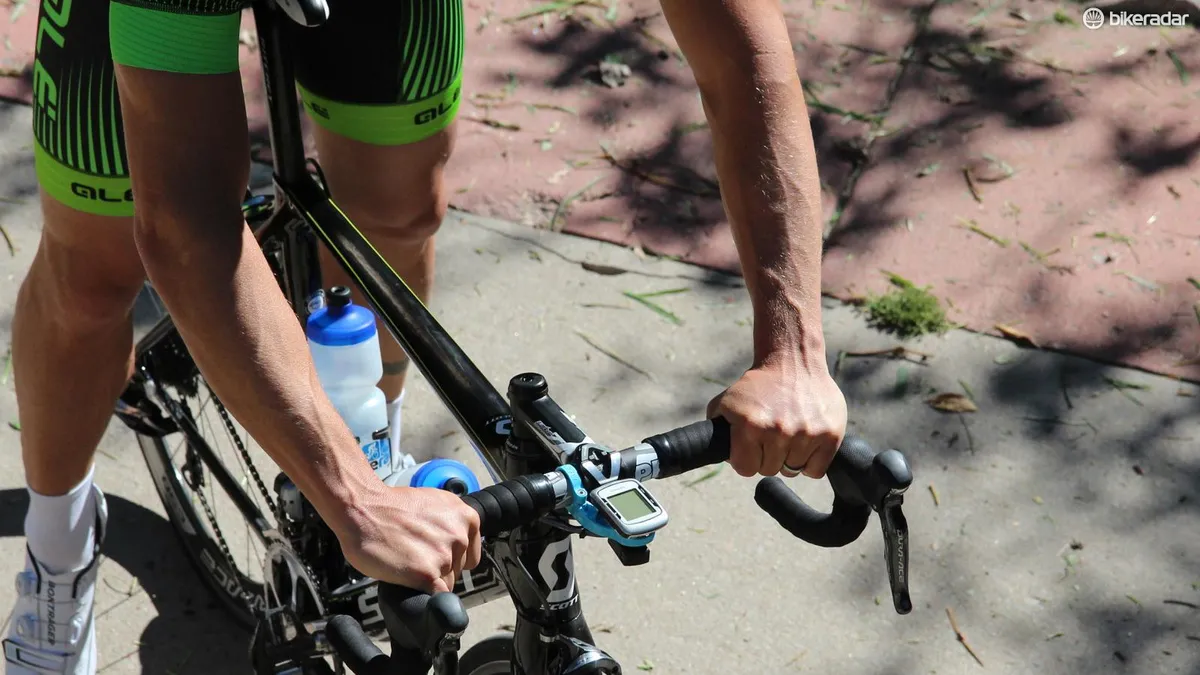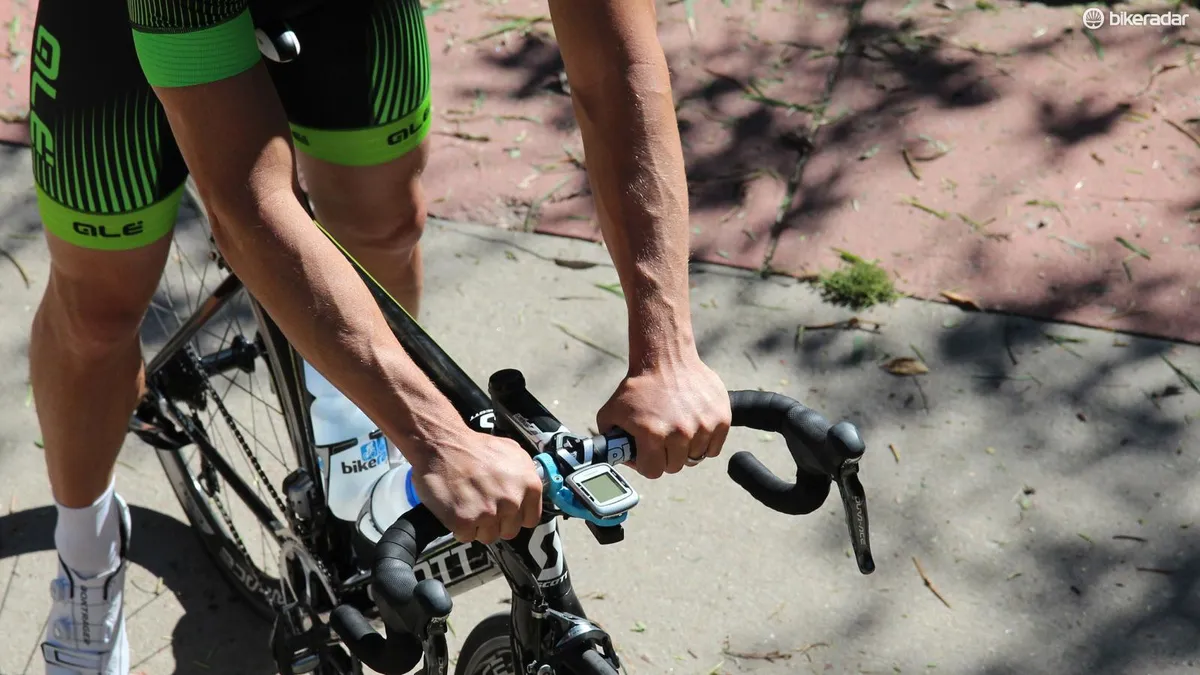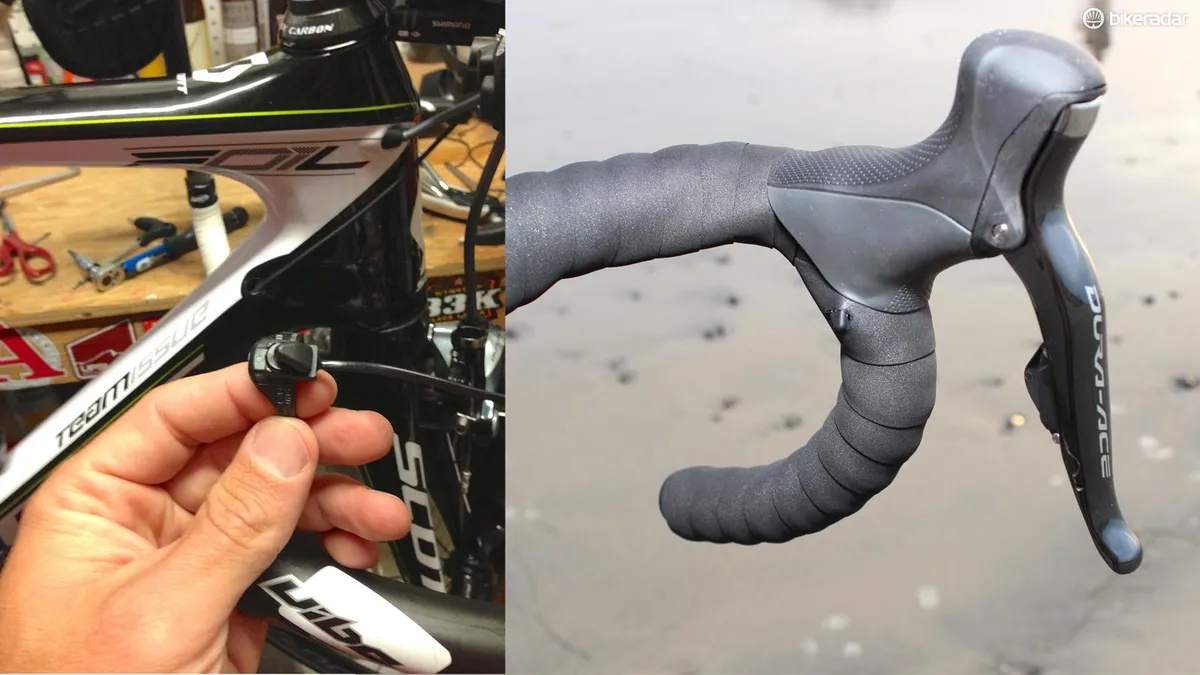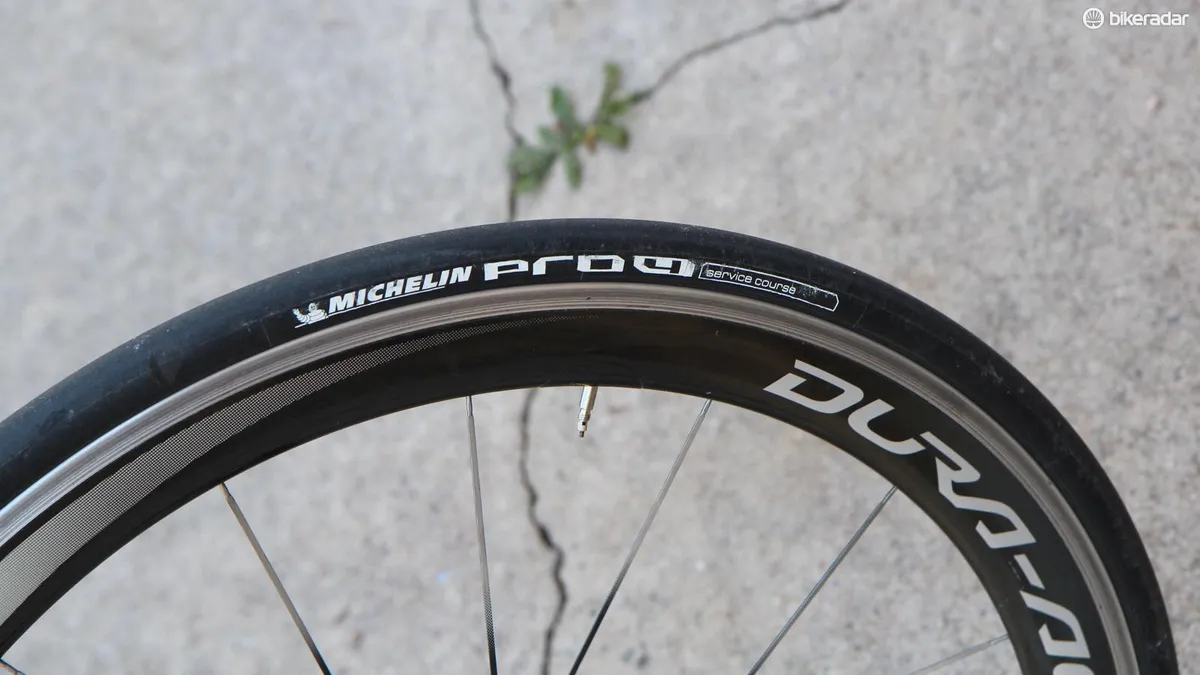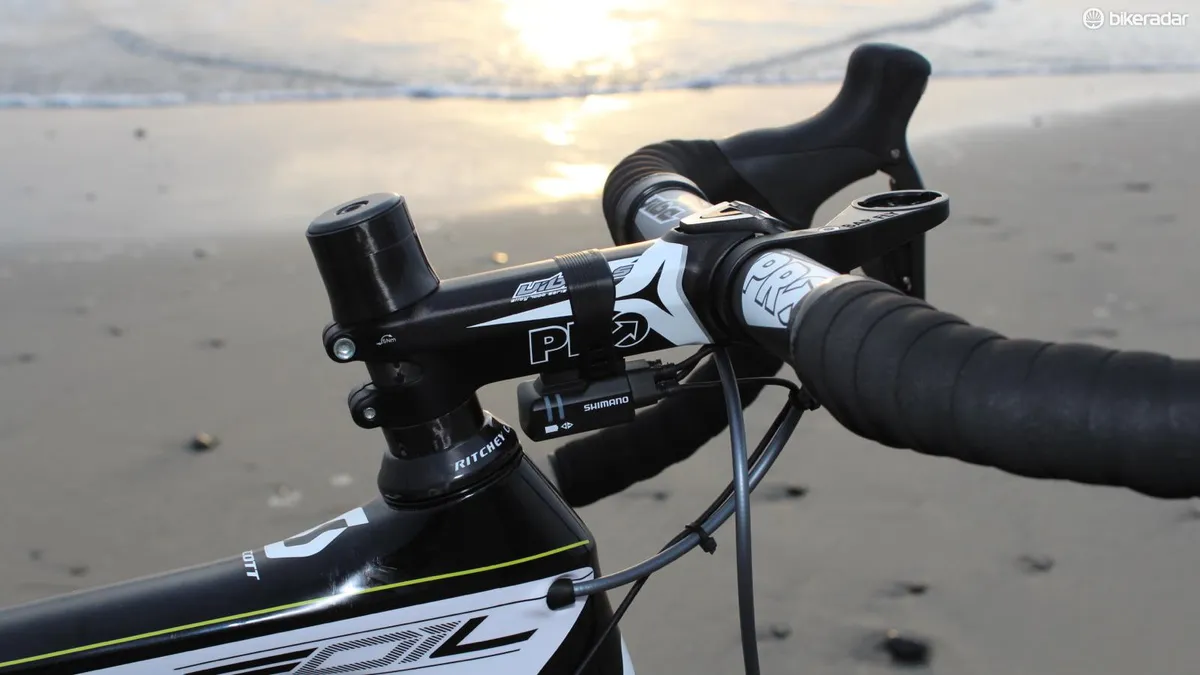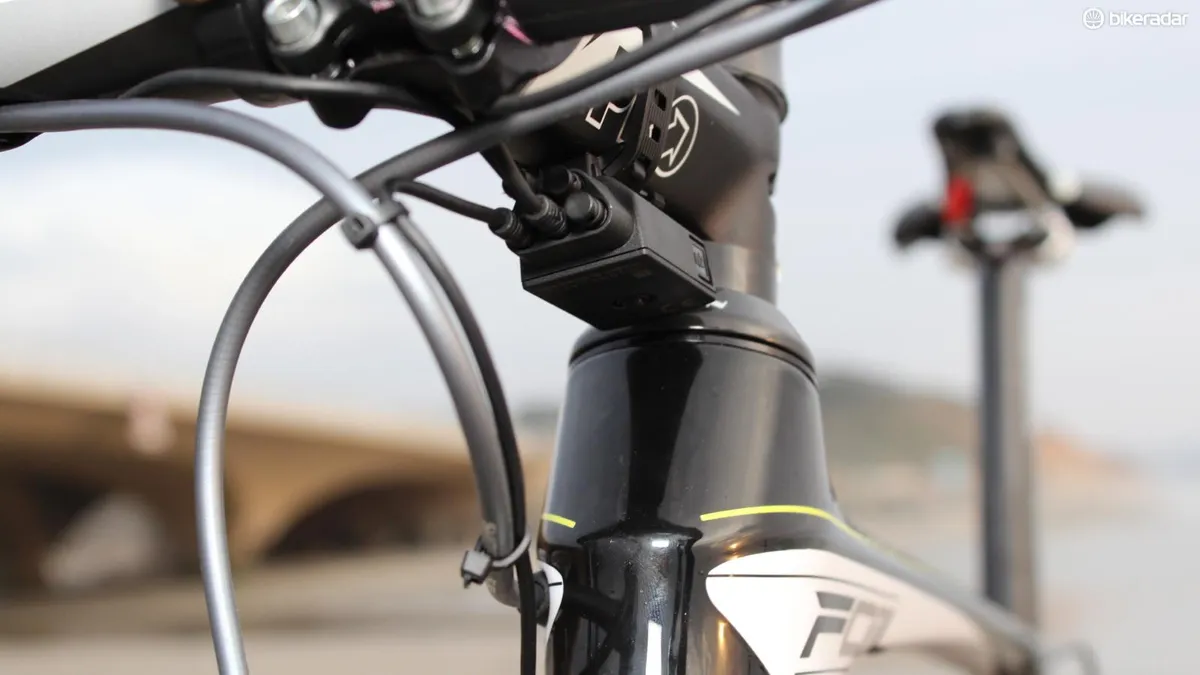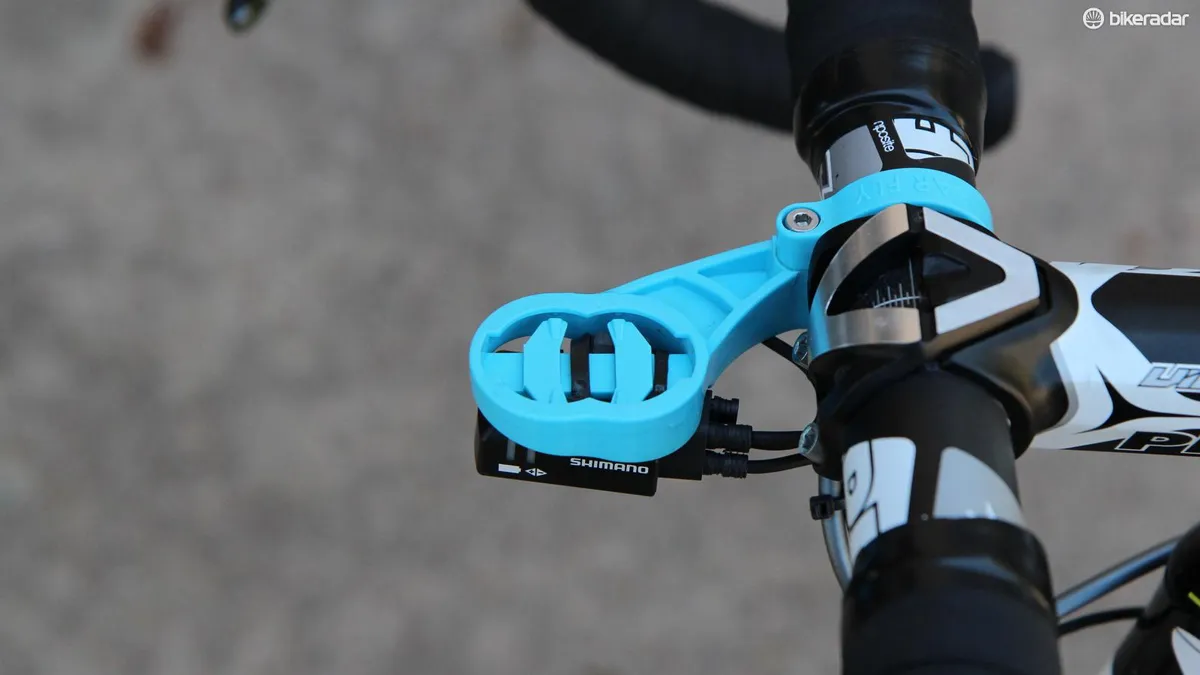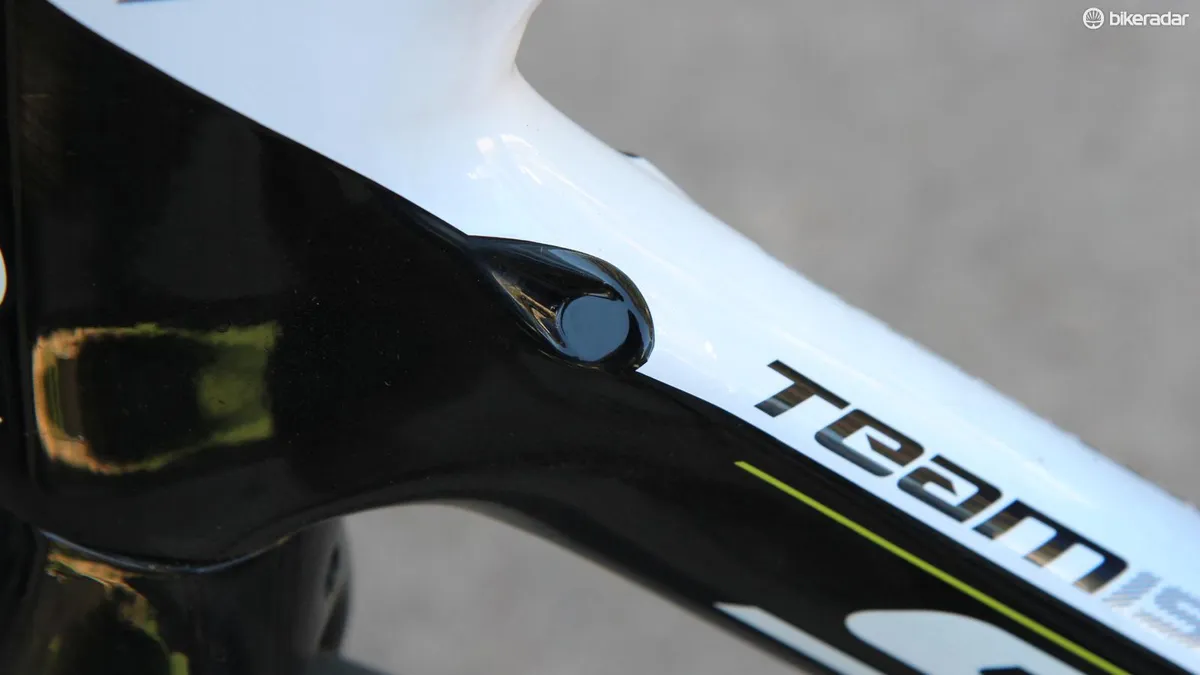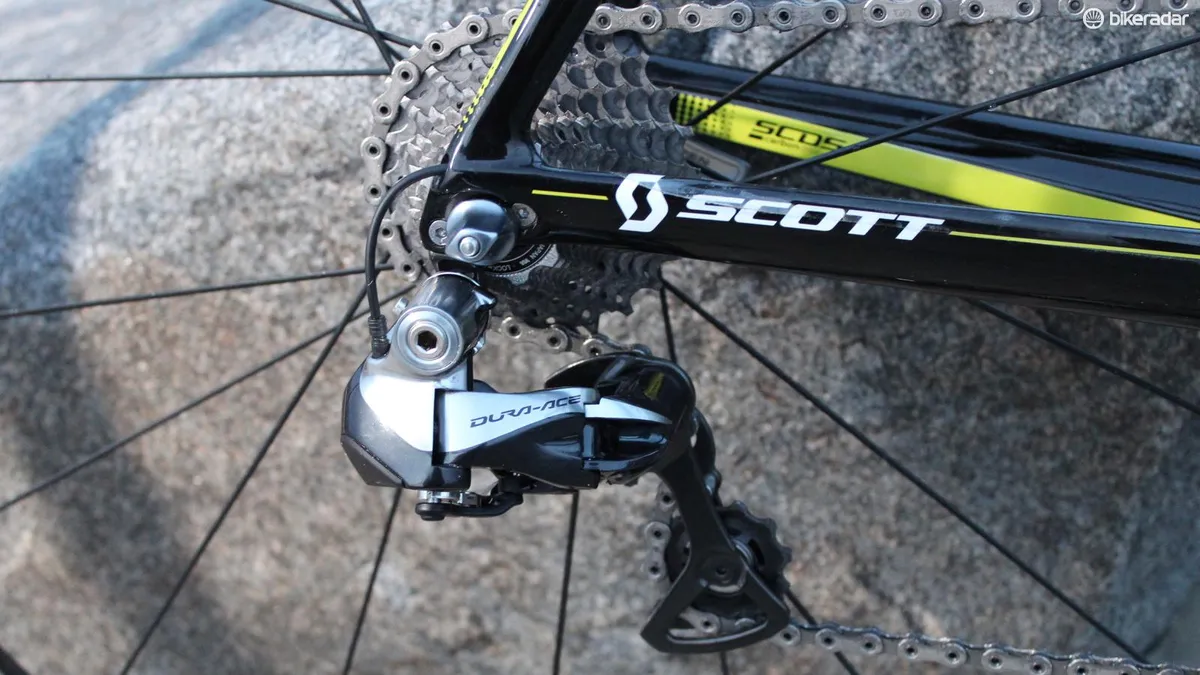After Eurobike I had the chance to visit Scott's Swiss headquarters and go for a weekend ride with three staffers on their ridiculously smooth roads at the foot of the Alps. With that context — some of the roads were nearly hardwood smooth, I kid you not — the staccato feel of the Scott Foil aero bike made more sense to me. For this retrospective Horse for the Course on a rolling, cross-wind-buffeted Colorado road race, we built up a Scott Foil Team Issue with Dura-Ace Di2 and sprint shifters, matching Stages power meter, Dura-Ace C50 wheels, PRO cockpit and a Fizik Aliante saddle.
For racing on decent roads, the Foil is a killer weapon. As luck would have it, this event was the one road race I won last year, and I believe the particular bike configuration made a difference. For all-around riding, especially on lousy pavement or dirt, the frameset can be a bit harsh and the bars aren't ideal.
- The course: The Deer Trail Road Race, a 65mi event in eastern Colorado with about 3,000ft of vertical gain, all in rollers. Relatively decent pavement with a fair amount of wind
- The equipment goal: An aero frame with fast wheels that is manageable in the wind
- The horse: Scott Foil Team Issue frame (56cm), Shimano Dura-Ace 9070 Di2 group with sprint shifters, Dura-Ace C50 wheels with Michelin 23c PRO4 Service Course clinchers, Stages power meter, Magellan Switch Up GPS computer, PRO Vibe7 stem, PRO Vibe compact handlebar, Fizik Aliante saddle
The self-proclaimed home to the world's oldest rodeo, Deer Trail is a tiny village on the eastern plains of Colorado where, in springtime, we cyclists are treated to an all-you-can-eat buffet of wind, with nary a tree to shelter behind. Lithe climbers hate this race, as the elevation gain comes only over short rollers, never any sustained climbs. But for thicker guys like me, sharp rollers and cross-, tail- and headwind stretches give you something to work with. I did the 35+ 1/2 race, as pro/1/2 has been over my head for a few years now.
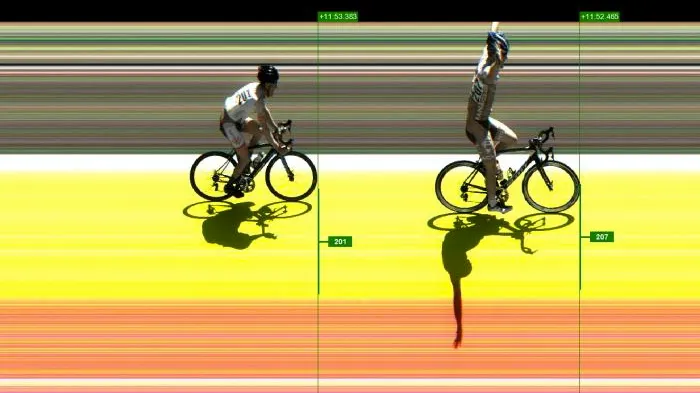
From the amateur level on up, races are typically won by small margins, so small improvements like sprint shifters can matter
Scott Foil Team Issue frameset: staccato and aero
As the name implies, the Foil uses truncated airfoil tube shapes for better aerodynamics. How much better? I don't know if I can feel the difference in slightly lowered drag, as the frame is such a small part of the total bike/rider equation. But I can absolutely feel the sharp stiffness in the frame, tip to tail. Handling is exact, with small input from the bars or hips commanding the steering. Acceleration is instant. And there is distinct feedback that goes to the rider, at the bars, saddle and even pedals of the hyper-stiff frame. When I clip in to Dura-Ace pedals at the medium-tension setting, for example, I can feel the snap at the saddle.
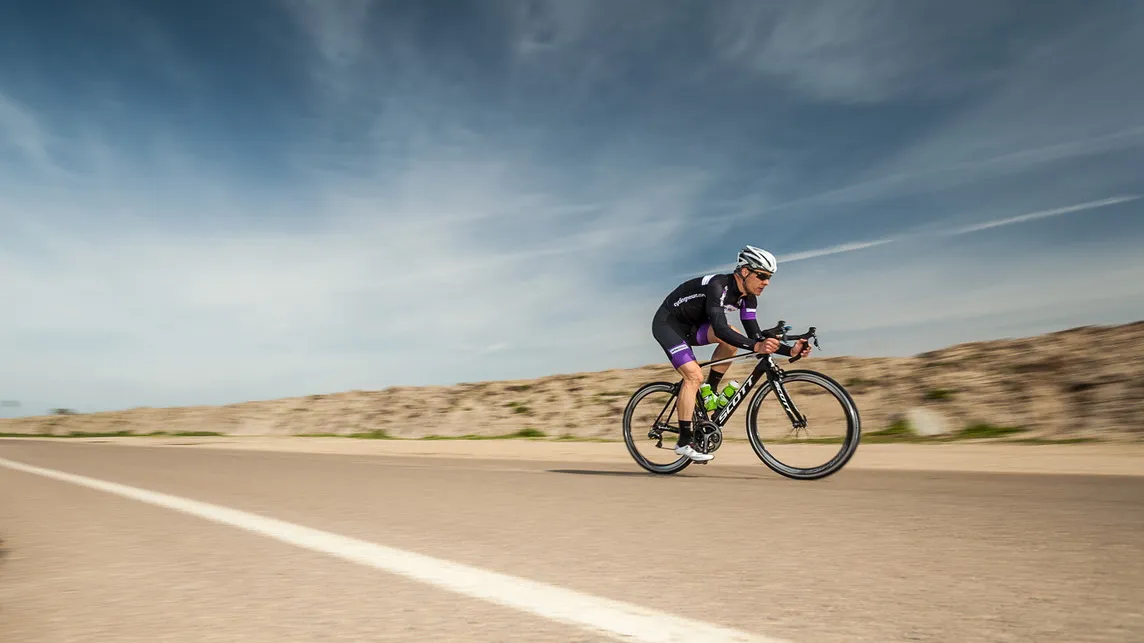
So, for racers who value aerodynamics, sharp handling and a stiff-feeling bike, it's hard to go wrong with the Foil. If you want to race it in a crit on Saturday, then take it on dirt roads on a Sunday, however, you'd probably be better suited with something else. For the record, I have ridden it on plenty of dirt, and it is okay, but not ideal. But again, having ridden on the glassy tarmac around Scott's headquarters (on their forgiving Solace endurance bike, ironically enough), I can now see how the Foil would be a delicious machine exactly as it is, every day on Swiss roads.
Whether responding to accelerations, or flat-out sprinting, the taut eagerness of the bike to move forward is gratifying. As for the aero design, well, I liken that to the sound of deep wheels or even the feel of compression; regardless of actual benefit, it is certainly good for the head to know you're on a relatively low-drag bike.
Shimano C50 clincher wheelset: fast, durable and true (a year later)
Shimano calls the C50 its carbon clincher wheelset, which is mostly true. The rims are carbon with an aluminum brake track. For me, this is a non-issue; I like braking on metal, and the minimal weight penalty over a carbon brake track - especially on a taller rim - isn't a deal breaker.
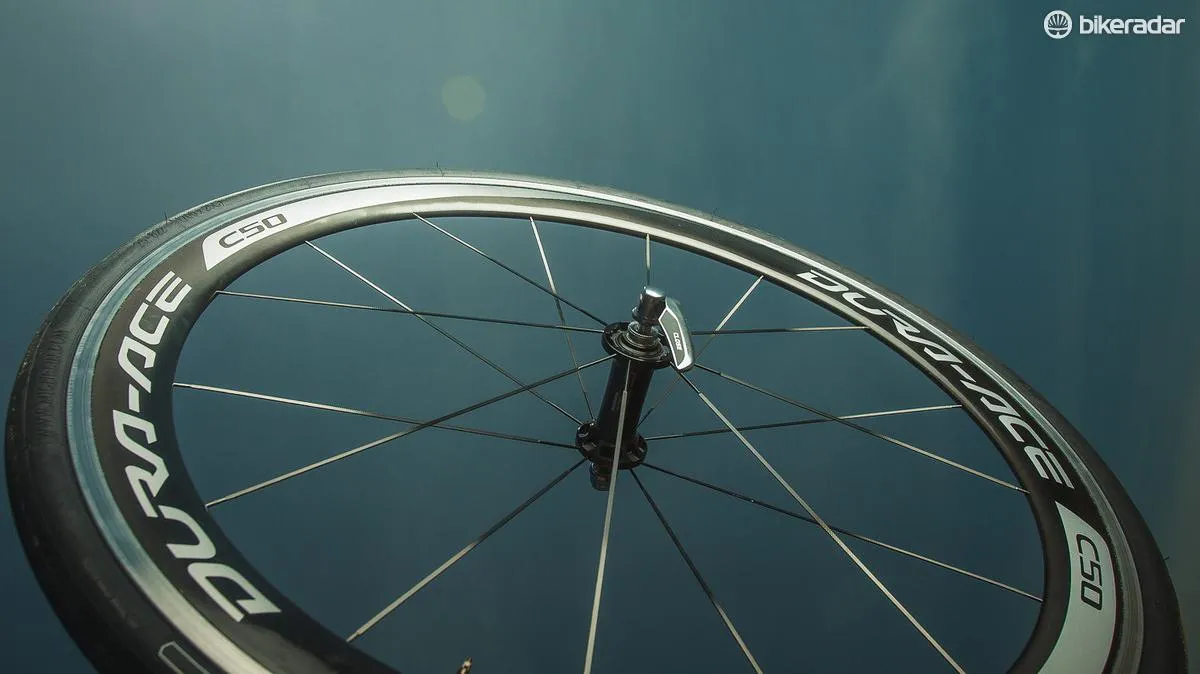
Initially, I wanted to ding Shimano for the internal nipples, a choice to value aerodynamics over serviceability. My mechanic friends always grumble about this. But then, I raced and rode the heck out of these things for over a year and... they are as true as the first day I rode them. I haven't had to touch them at all. (The hubs are still silky smooth, too.) The one nit I have to pick is the slender valve stem hole - while great for removing any rattle from the required long stems, means you cannot use valve extenders with shorter-stem tubes, as the hole diameter is too narrow.
On race day, the wheels delivered. You definitely don't want to ride with your hands off the bars when a sidewind is blowing, but the side pressure is very manageable and not whippy.
As with the aero frame, I can't quantify how much faster a C50 is over, say, the shallower C24, but we have all looked at enough aerodynamic drag charts by now to agree that deeper wheels (and airfoiil frames) are generally faster than box-section options, right? Shimano optimized the aerodynamics of the C50 wheels for use with 25c clinchers.
PRO Vibe handlebars: Great for racing; enhances some positions but eliminates others
Shimano's house-brand PRO has a deep menu of components, including the alloy Vibe 7S stem and carbon Vibe compact bar used. The shallow-drop, long-extension bar is very comfortable for riding in the drops, and hyper-stiff and well-designed for sprinting, but the drastic curve that allows for great forearm clearance when in the drops eliminates the wide-stance position when riding on the tops.
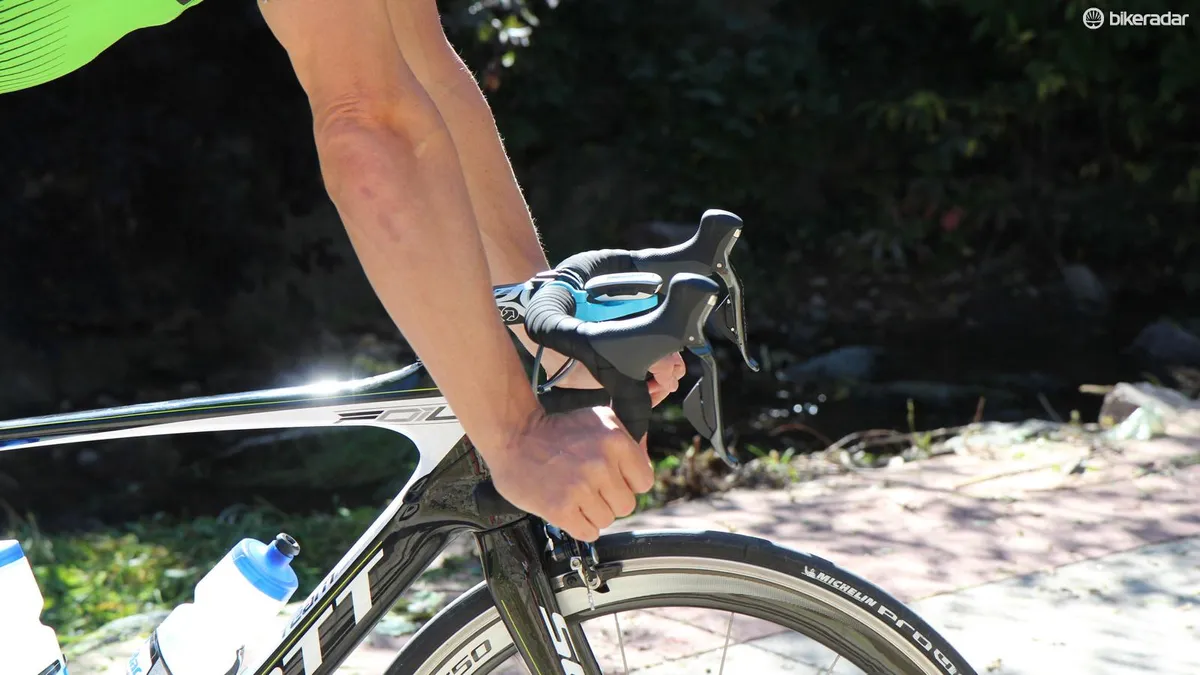
For sitting up high, your options are to either keep the hands tight together, like a hipster on a fixie with chopped bars, or rest your hands on the hoods. For the latter, the lack of pressure on the outside of the hand is noticeably more comfortably (for me, at least), than bars with more of a 90-degree bend. But it's weird not to be able to ride normally on the tops; in a wide stance, the wide bend pivots your hands and thus forearms out at a Chris-Horner-like, elbows-out angle. Further, the tops at that fixie-kid position are the super-fat 31.8mm diameter, which takes some getting used to, and accentuates the angled bend even more.

So, as with the rest of the bike, for racing, this is a killer set-up. For Deer Trail, I was either in the drops with arms comfortably locked or on the hoods with elbows bent. When in the drops, I was fine-tuning the shifting all day with my thumbs on the sprint shifters. I don't think I used the lever buttons at all for rear derailleur shifting.
Shimano 9070 Dura-Ace Di2: I heart sprint shifters
Let me get my bias out of the way: I love this group. You can read the full Shimano 9070 Di2 review here. But let's talk about the sprint shifter buttons. The peripheral shifters consist of a little clamp that snaps onto the handlebar, a one-direction triangular button, and a wire that runs under the handlebar tape to either the junction box or the back of the shift levers. As with the other buttons on Di2, you can program the sprint shifters to control front or rear, in either direction. This requires a PC, however, and I have a Mac. I left the configuration stock: the left-hand button moves the rear derailleur up the cassette into easier gears; the right button drops the chain down into bigger gears.
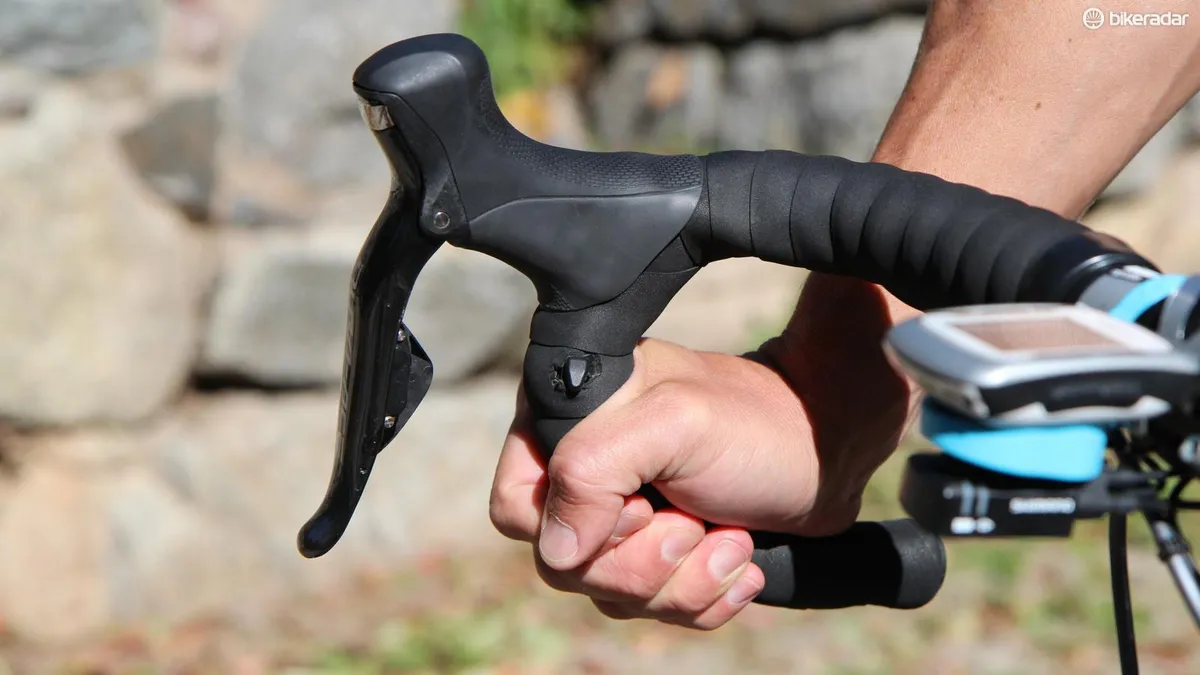
I found that moving the shifters ever closer to my hands meant I shifted more. Just rolling along in the group, or scrapping for a draft in the gutter, a tiny flick of the thumb kept cadence exactly where I wanted it. Shifting during accelerations is advantageous, too; with all your fingers wrapped tightly around the bar, you can continue to yank on the bars for leverage, and with Di2's derailleur motor, you can move up and down the cassette at full power. It's a small thing, saving you fractions of a second here and there, but those add up.
As the race played out, I ended up in a break that eventually whittled down to four riders. With a slightly uphill finish into a crosswind, I stayed tucked behind another rider in the last few hundred meters, jumped hard at about 150m to go and... started to bog down in the gear into the wind. Hello, sprint shifters! A little flick of the left thumb while still sprinting at full (albeit fading) power, the cadence came back up, and I managed to take the sprint.
Data trap: Stages power meter, Magellan Switch Up GPS, Di2 junction box mount
I was testing a Magellan Switch Up GPS computer at the time, which works fine. It's called Switch Up as you can attach it to a wrist strap and use it as a running watch - a relatively enormous running watch, I should add. The dual-nature also contributes to its bulky bike mount, but for capturing data it is perfectly functional. You can read my review on the Magellan Switch Up here.
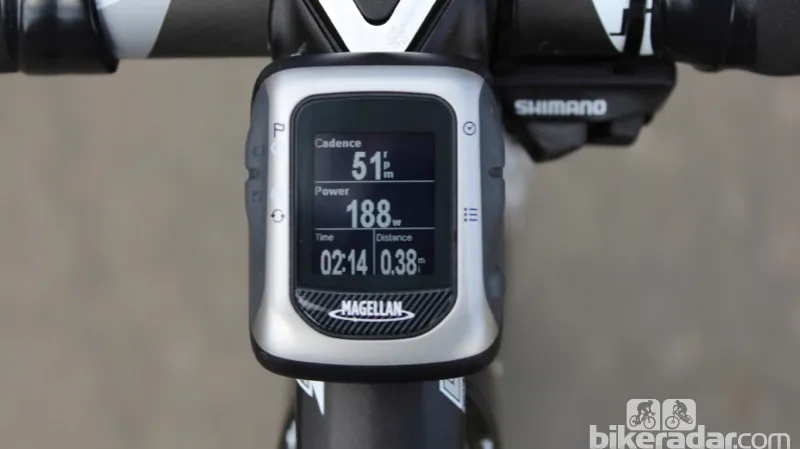
I've since gone back to my trusty Garmin Edge 500, and mounted the Di2 junction box to the bottom of a Bar Fly 2.0 Garmin mount. I think the standard junction box mount - a big rubber band wrapped around the stem - looks a little junky. A couple zip ties around the inner Bar Fly structure cleans up the stem nicely. The junction box comes in 3- and 5-port options. I'd prefer the 3-port for its smaller size; plus you can plus in peripherals to the shifters, anyway.
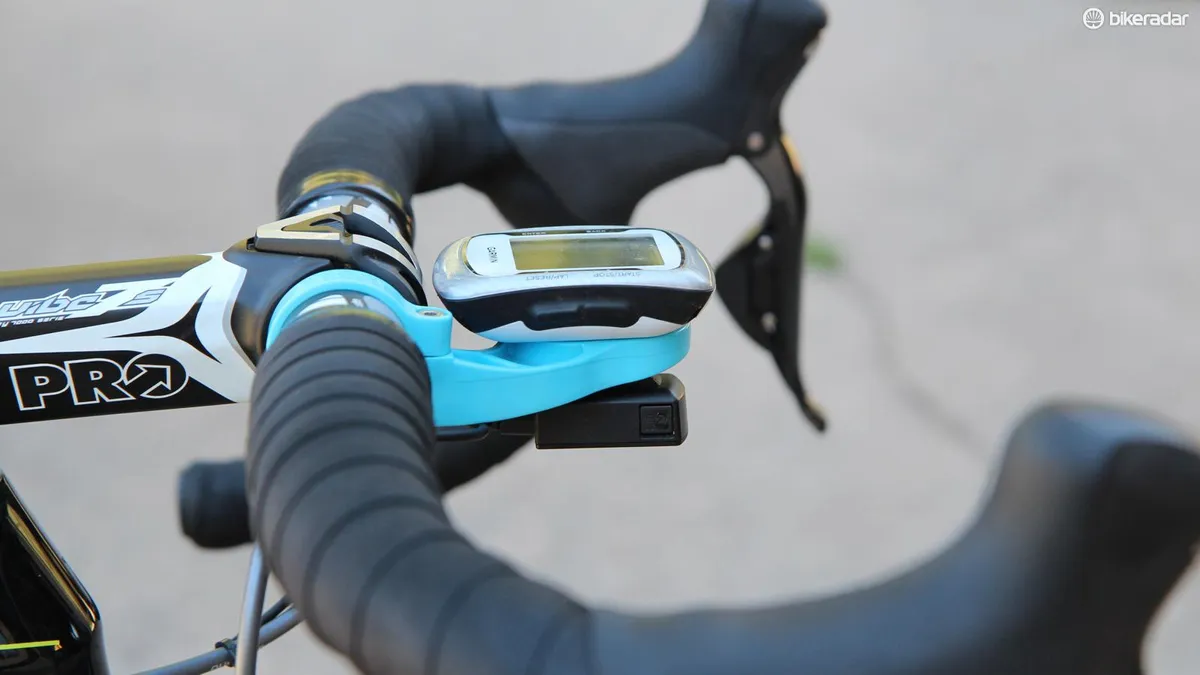
I'm a fan of the Stages left-crank power meter for a few reasons: it's a clean look, there is virtually no weight penalty, you can use any pedals or wheels you like, the price is reasonable, and the data is good enough to train with. Last winter I tested three and four power meters simultaneously, and while Stages wasn't exactly on target with a SRM, PowerTap or Vector, it was pretty darn close — and substantially cheaper.
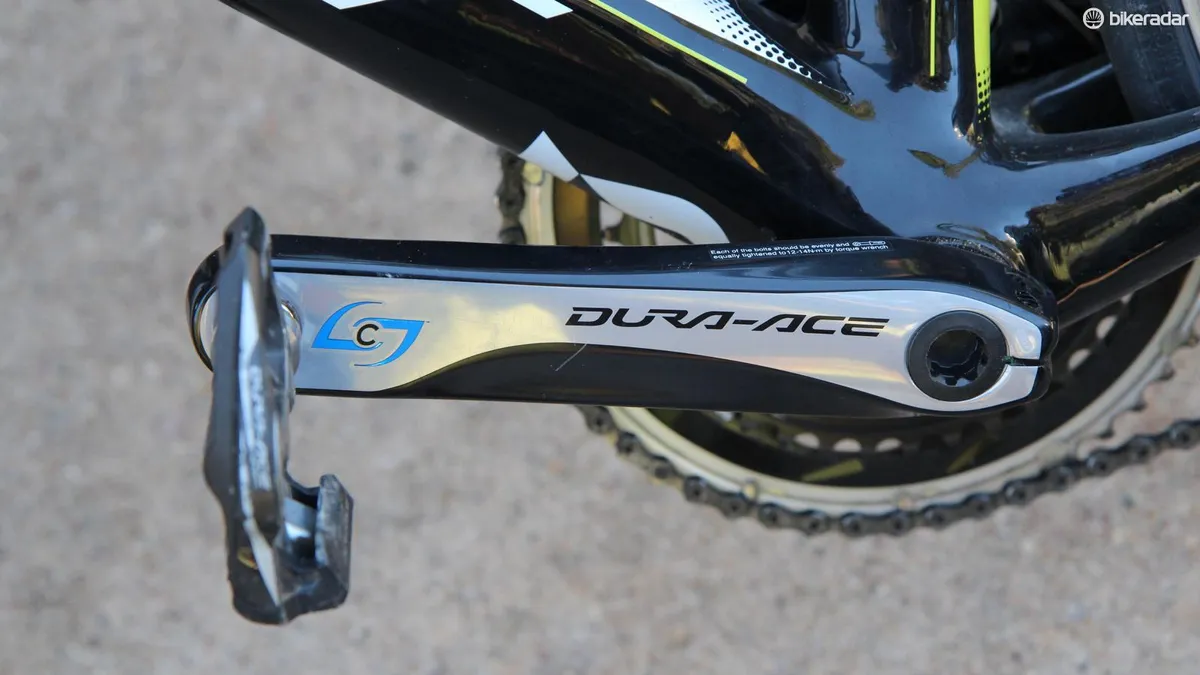
Bottom line: Foil proves to be a thoroughbred, Dura-Ace gear continues to excel
To mangle the old saying, rolling up to a friendly group ride on this is like bringing a machine gun to a knife fight. This is not a comfy endurance bike. But if you've read this far, you're probably more interested in racing than easy riding. And for that, this bike is money. Built up as shown, including cages and Dura-Ace pedals, the 56cm bike weighs 7.35kg / 16.2lb.
The Scott Foil is a bona fide race bike. And Shimano Dura-Ace continues to set the bar for high-performance, high-durability road gear.
